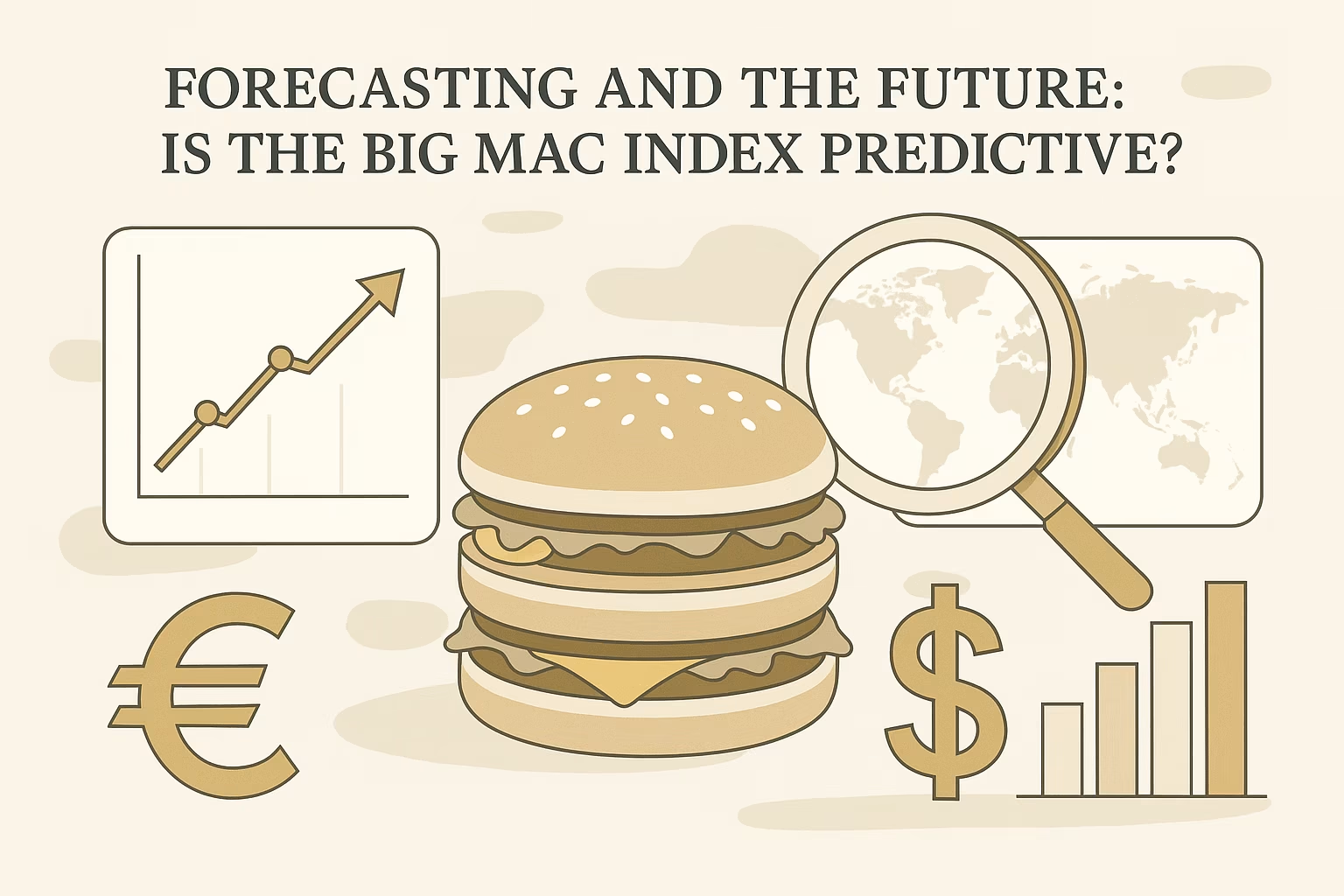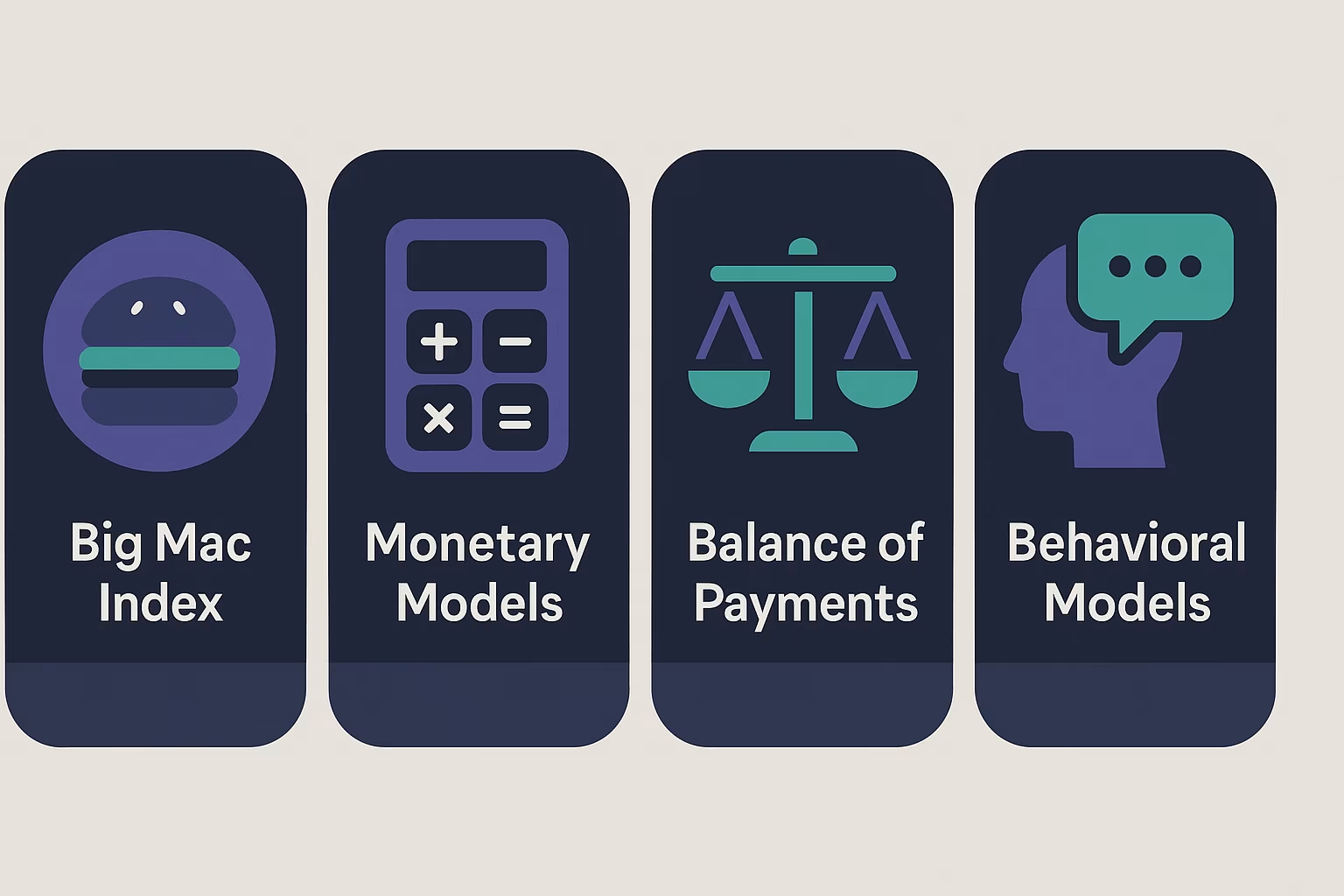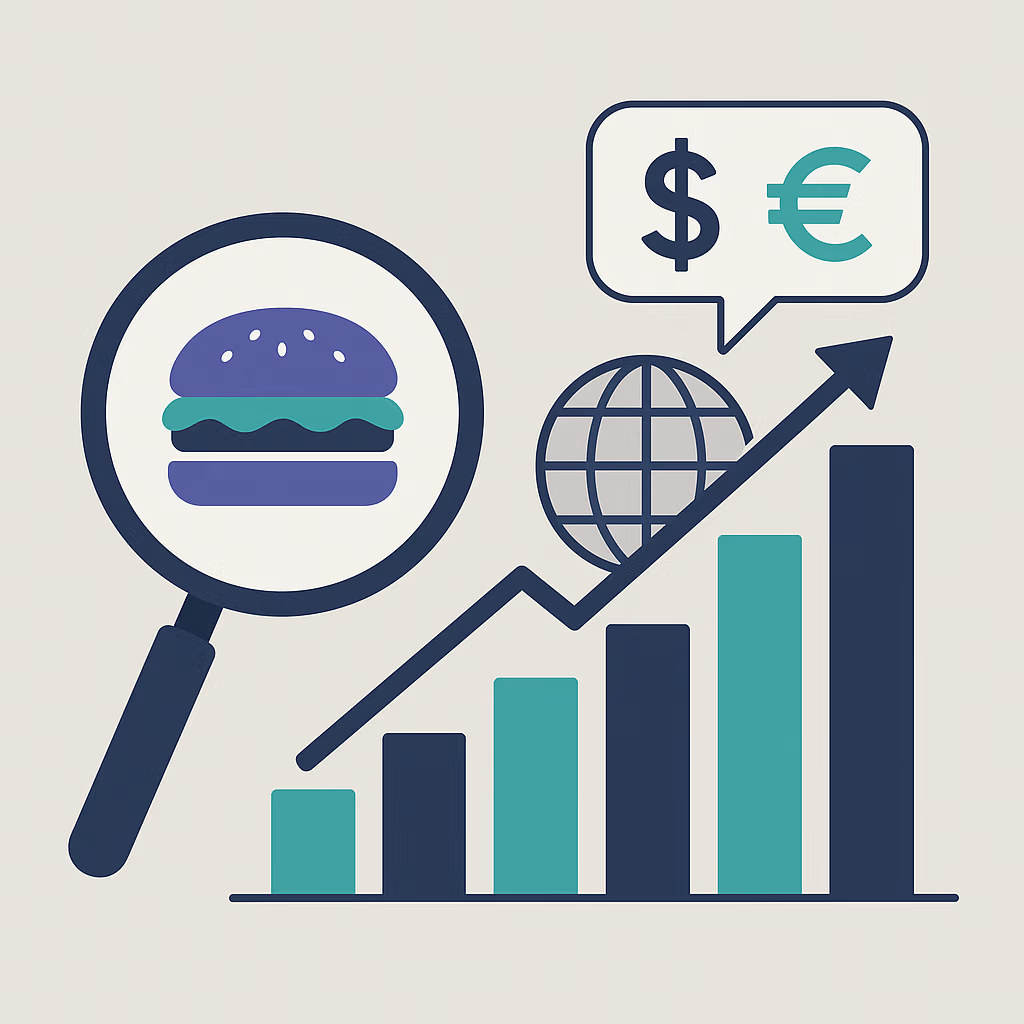Explore the predictive power of the Big Mac Index in forecasting currency movements and how it compares to traditional economic models.
Forecasting and the Future: Is the Big Mac Index Predictive?
The Big Mac Index has become one of the most recognizable informal tools in global economics. But can a burger-based benchmark really forecast currency movements? While not designed for forecasting, the index offers valuable insights—especially when viewed alongside traditional economic models.

---
Can the Big Mac Index Predict Currency Movements?
The Big Mac Index compares actual exchange rates with implied PPP values to assess over- or undervaluation. In theory, undervalued currencies should appreciate, and overvalued ones should weaken, to move toward purchasing power equilibrium.
But reality is more complex.
Short-Term? Not So Much
In the short run, the index often lacks predictive power due to:
- Market sentiment and speculation - Interest rate differentials - Political and policy instability - Capital flows and central bank intervention
Long-Term Trends
Over longer timeframes (3–5 years), empirical studies show that currencies do tend to revert toward PPP-implied values. The GDP-adjusted version of the index, introduced by The Economist, improves predictive validity by accounting for income levels and structural differences.
#### Notable Examples: - China (2005–2015): The yuan steadily appreciated against the dollar after years of Big Mac undervaluation. - Eurozone (2010–2020): The euro’s undervaluation post-Eurocrisis saw correction as confidence returned.
---

How It Compares to Traditional Models
Professional economists and traders rely on a suite of models to forecast currency trends. Here’s how the Big Mac Index stacks up:
| Model | Inputs | Strengths | Weaknesses |
|---|---|---|---|
| Big Mac Index | Burger price differentials | Intuitive, accessible, reflects local costs | Ignores monetary policy, debt, capital flows |
| Monetary Models | Interest rates, money supply | Theoretically sound, academically robust | Complex, often fails short-term |
| Balance of Payments | Trade surplus/deficit, capital account | Useful for trend analysis | Lagging indicator |
| Behavioral Models | Sentiment, positioning | Captures speculative moves | Unpredictable, volatile |
---
Complementary, Not Competitive
Rather than replace formal models, the Big Mac Index complements them by:
- Offering entry-level analysis for beginners and media - Serving as a sanity check for extreme currency valuations - Highlighting price-level disparities not captured in trade or monetary data
In finance, it’s often used as a casual validation step—“If the peso is 60% undervalued, maybe we dig deeper.”
---
Final Verdict
Is the Big Mac Index predictive? Yes—with caveats.
It captures long-term currency misalignments, especially when combined with structural data like GDP. It stimulates discussion and flags imbalances that warrant deeper analysis.

But it’s not a forecasting oracle. For daily or even quarterly predictions, you’ll still need Bloomberg terminals and econometric models.
Still, in a world full of complexity, there’s something powerful about predicting global currency shifts using something as simple—and tasty—as a burger.
Share this article
More Articles
Methodology Behind the Big Mac Index
Learn the straightforward steps behind calculating the Big Mac Index and how it helps identify currency overvaluation and undervaluation.
What is the Big Mac Index? A Complete Guide
Understanding how a simple burger became one of the most popular economic indicators for measuring purchasing power parity across countries.